Are you looking for the best NFT marketplace to suit your art or design work? We share the best NFT marketplaces for artists below.
For artists, designers, and other creative people, the NFT space offers a great opportunity. Per data published by Statista, as of February 15, 2022, the aggregated NFT sales value over 30 days in the art sector worldwide amounted to around 87 million USD.

However, to succeed as an NFT creator financially, you should explore various marketplaces to see which ones best suit the types of NFTs you create. Selecting the correct NFT marketplace could decide if your artwork sells.
How can you figure out which one is right for you, and if you’re a newbie, where should you begin?
We have compiled a list of the best NFT marketplaces to help you make a better decision.
If you’re new to NFTs, see our guides: What is an NFT, NFT FAQs, and our NFT marketing guide.
10+ Best NFT Marketplaces for Artists
If you’re wondering where to buy NFTs in 2025, we have you covered. Here are the best NFT marketplaces ranked for you.
OpenSea
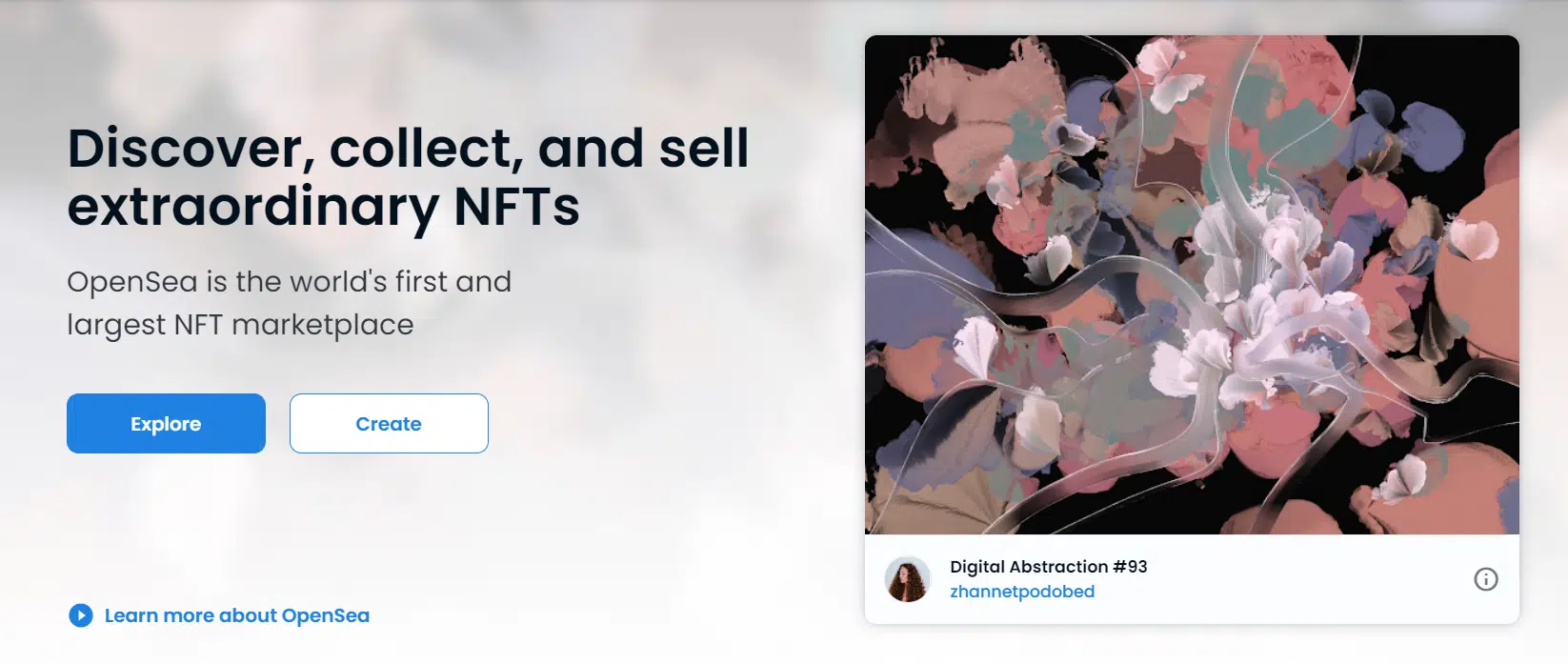
From our perspective as graphic designers, we’d love to share our insights on one of the best NFT marketplaces – OpenSea.
As a pioneer in the NFT landscape, OpenSea stands as the largest and most well-established platform within the Ethereum blockchain realm.
Its expansive offerings encompass an impressive array of NFT categories, ranging from captivating art pieces to collectibles, virtual lands, and even domain names.
Drawing from our personal experience, one thing we greatly appreciate about OpenSea is its user-friendly nature. The account setup process is swift and hassle-free, allowing you to dive into the marketplace swiftly and seamlessly.
What’s particularly enticing is OpenSea’s non-exclusive approach. The absence of a rigorous review process means you can mint your NFT creations and promptly commence your selling journey without unnecessary delays.
However, let’s delve into one noteworthy aspect that warrants consideration – gas fees. For newcomers venturing into selling on the platform, it’s essential to be aware that initial transactions entail two types of fees.
The first covers the initiation of your account for sell orders, while the second grants OpenSea access to your NFT item. This second fee applies only if you’ve minted your NFT using a smart contract rather than directly through the OpenSea platform.
Once these initial hurdles are overcome, the advantageous aspect surfaces – sellers are exempt from subsequent minting fees. This freedom empowers you to mint and list an abundance of NFTs without incurring additional costs.
The flexibility extends to listing options, with three choices available: fixed price, declining listing price, and auctions. Even within fixed-price listings, buyers have the latitude to make offers, which you can then choose to accept.
In terms of transaction dynamics, when your artwork sells at a fixed price, the buyer assumes responsibility for the gas fee during the sale. Conversely, if an offer deviates from the fixed listing price and you accept it, you, as the seller, are responsible for the associated fee.
Origin Story

We’re excited to share our firsthand insights on one of the finest NFT marketplaces – Origin Story. Our personal experience has led us to discover that, unlike conventional NFT platforms, Origin Story sets itself apart by specializing in the creation of bespoke Label NFT Marketplaces in collaboration with esteemed collections.
This unique approach aggregates listings from prominent marketplaces, offering users a unified hub where they can access a wealth of offerings.
One aspect that we personally found incredibly valuable is the platform’s advanced analytics toolkit. It provides users with a comprehensive view of essential metrics, including holder distribution, notable holders, and aggregated volume statistics across various NFT projects. This level of insight proves invaluable in making informed decisions within the bustling NFT landscape.
Origin Story has fostered partnerships with prestigious collections, further bolstering its credibility and appeal.
Notable collaborations encompass renowned names such as Pudgy Penguins, Karafuru, Moonrunners, Sappy Seals, OnChainMonkeys, and 0N1 Force, among others.
This strategic alignment ensures that only official NFTs from affiliated collections find their way onto the marketplace, effectively eliminating NFT fraud concerns and offering a secure environment for creators and collectors alike.
An additional highlight is the platform’s bulk import listing feature, which simplifies the process of migrating NFT listings from alternate marketplaces. This seamless transition facilitates efficient management and optimization of your NFT portfolio within Origin Story’s ecosystem.
What distinguishes Origin Story even further is its unique approach to rewards. The marketplace’s fee structure directs all proceeds back to the holders of OGN tokens, contributing to a symbiotic relationship between the platform and its user base.
This includes a rewarding staking mechanism, with stakes reaping the benefits at the conclusion of each season.
The ongoing Season’s staking feature serves as a testament to the platform’s commitment to enhancing the value proposition for its engaged community.
While Origin Story presents a compelling and innovative approach to NFT marketplaces, it’s important to note a potential drawback. Given its specialization in building White Label NFT Marketplaces in partnership with specific collections, there could be limitations in terms of the range and variety of NFTs available on the platform.
Rarible

Rarible offers a dynamic space for both singular artworks and comprehensive collections. Just like OpenSea, Rarible serves as a hub for a diverse spectrum of NFT categories, catering to a wide array of artistic expressions.
Rarible distinguishes itself by introducing its very own cryptocurrency, RARI, which operates as a governance token. Holders of RARI enjoy a voice in influencing platform upgrades through voting on proposals and actively participating in NFT curations. This element of community involvement contributes to the platform’s vibrant and engaged ecosystem.
While Rarible proudly showcases curated collections, its inclusive ethos sets it apart. Like OpenSea, Rarible embraces a non-exclusive approach, allowing both established creators and newcomers alike to mint and sell their NFT artworks.
An interesting feature is the seamless integration between Rarible and OpenSea – when you list an NFT on Rarible, it automatically becomes accessible on OpenSea, broadening your reach within the NFT community.
In terms of fees, Rarible maintains a transparent structure. The total transaction fee, set at 5% of the sale price, is divided between sellers and buyers, with each party contributing 2.5%.
Sellers have the flexibility to opt to pay the entire fee, enhancing the attractiveness of their NFTs to potential buyers.
Highlighting Rarible’s adaptability, it not only supports Ethereum but also extends its compatibility to the Flow and Tezos blockchains. This multifaceted approach enables creators and collectors to engage with NFTs across various blockchain networks, offering enhanced accessibility and versatility.
As we list the best NFT marketplaces, Rarible emerges as a compelling choice, fostering an environment of creative expression, community engagement, and accessibility.
One potential drawback worth considering within the scope of Rarible is the absence of a dedicated mobile application.
GameTrade
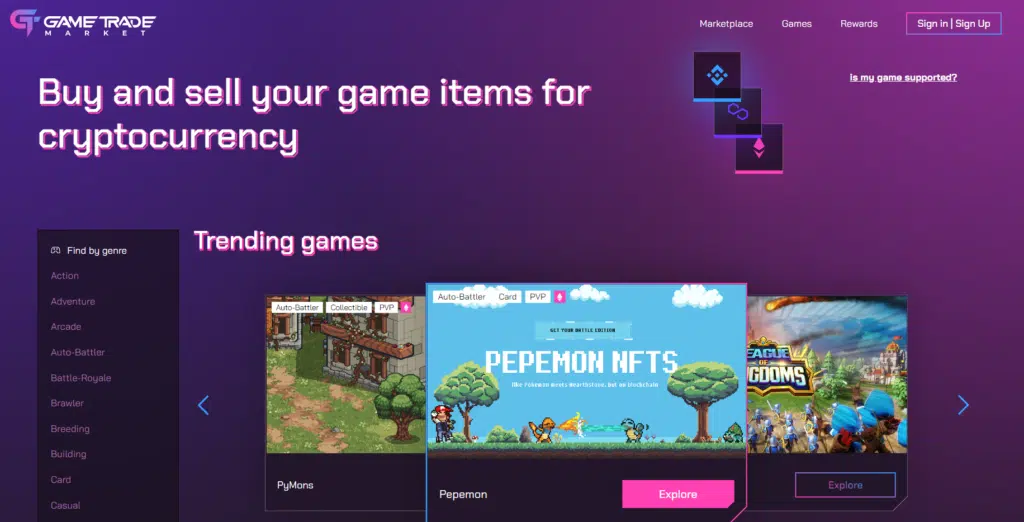
During our exploration of the best NFT marketplaces, we can affirm that GameTrade emerges as a distinctive platform tailored to cater to both gamers and seasoned traders.
Designed with meticulous attention, GameTrade optimizes the trading experience by seamlessly integrating advanced communication features, rendering it an optimal choice for those seeking top-tier trading interactions.
One noteworthy aspect that we find particularly innovative is GameTrade’s vision of amalgamating social media elements with a trading platform. This hybrid approach, masterminded by the platform’s administrators, anticipates the evolving landscape of trading within future virtual metaverses.
A comprehensive suite of features characterizes GameTrade, elevating its standing as a robust NFT marketplace. Encompassing vital aspects such as buyer-seller communication, automated transactions, price tracking, and inter-user item trading, the platform equips both gamers and professional traders with essential tools for their endeavors.
Of notable significance is the convenience afforded to professional traders, who often juggle multiple game accounts. GameTrade streamlines this process, alleviating the complexities associated with multi-account trading.
The incorporation of blockchain technology serves as a pivotal safeguard within GameTrade. Transactions are fortified by this innovative technology, ensuring the integrity of each trade and preventing unauthorized access or duplications. This security framework offers reassurance to participants, bolstering trust and transparency.
Beyond the mechanics of trading, GameTrade fosters a sense of community engagement. Activities such as game and item reviews, direct messaging, and interactive discourse form integral components of the platform’s communal fabric.
Personalization further enhances the user experience, with each participant granted their own profile page. This personalized space allows for the selection of highlighted items, avatars, and profile background imagery, enabling individuals to express their unique identity.
Additionally, GameTrade supports both native cryptocurrency and in-game currency transactions, offering users versatile avenues to engage in NFT trading.
One of the challenges that we noticed about this is the platform’s focus on a hybrid of social media and trading functionalities.
While this innovative approach aims to align with future virtual metaverses, it could potentially lead to an experience that leans more heavily towards social engagement than streamlined trading for certain users.
Mintable

One element that has truly captured our attention is the Mintable platform, which bears a remarkable resemblance to the functionalities of OpenSea and Rarible.
Mintable sets itself apart by offering support for standard Ethereum transactions. Notably, it has seamlessly integrated with Immutable X, an integration that brings forth the fascinating concept of gas-free minting.
This unique feature allows sellers to mint their items without incurring any gas fees, making the process exceptionally cost-effective. A distinct advantage is that Mintable adopts a non-exclusive approach, refraining from imposing any approval process on creators.
However, it’s important to consider a potential drawback. When juxtaposed with other platforms, Mintable appears to exhibit a lower level of user activity. This observation prompts a degree of caution, as the volume of engagement and transactions may differ from what some users might anticipate.
As we continue to assess platforms within the NFT landscape, Mintable presents a blend of enticing features and potential limitations that should be weighed thoughtfully to align with individual preferences and objectives.
Foundation
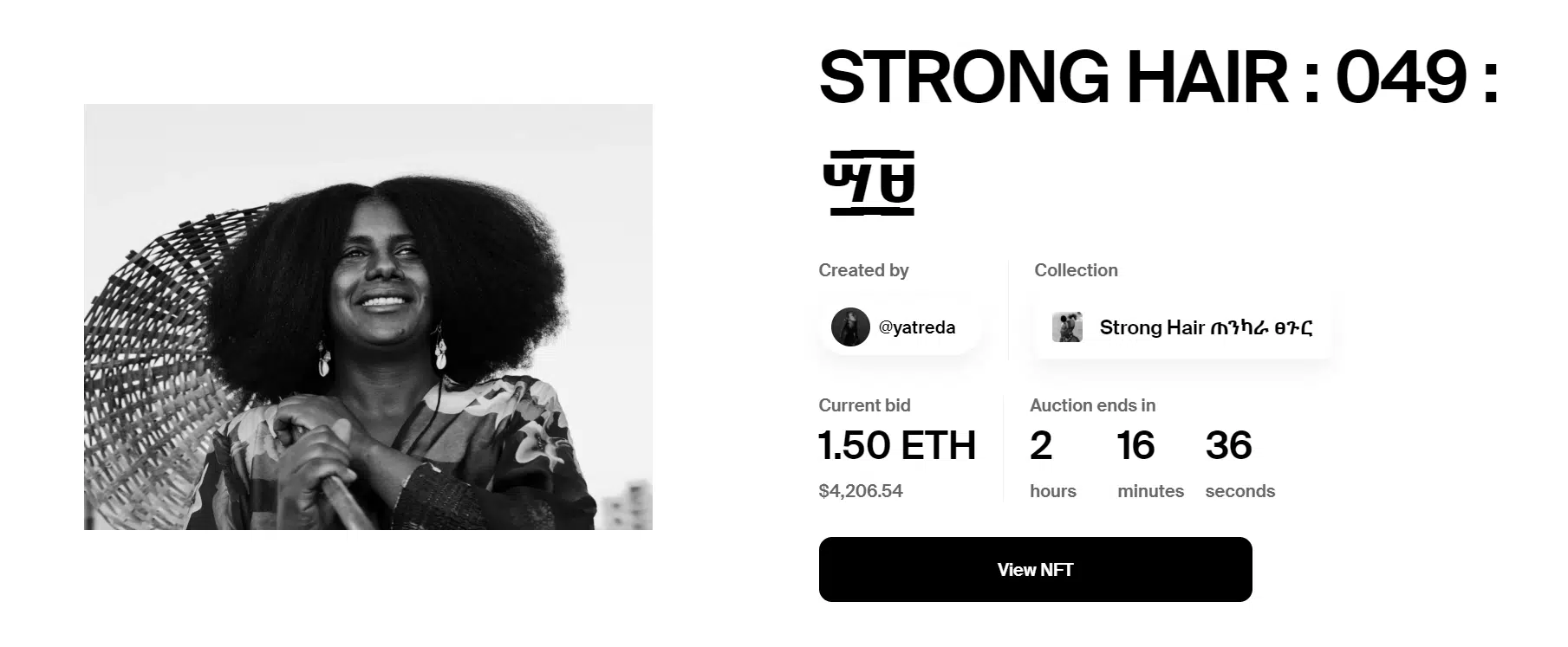
Foundation is an invite-only NFT art platform. To list your NFT, a creative who has already published work on the platform must invite you.
- Your NFTs can be resold on OpenSea and Rarible, and you receive 10% royalty for each secondary sale.
- The platform charges a 15% commission rate for each sale.
- It’s less popular than the other marketplaces.
SuperRare
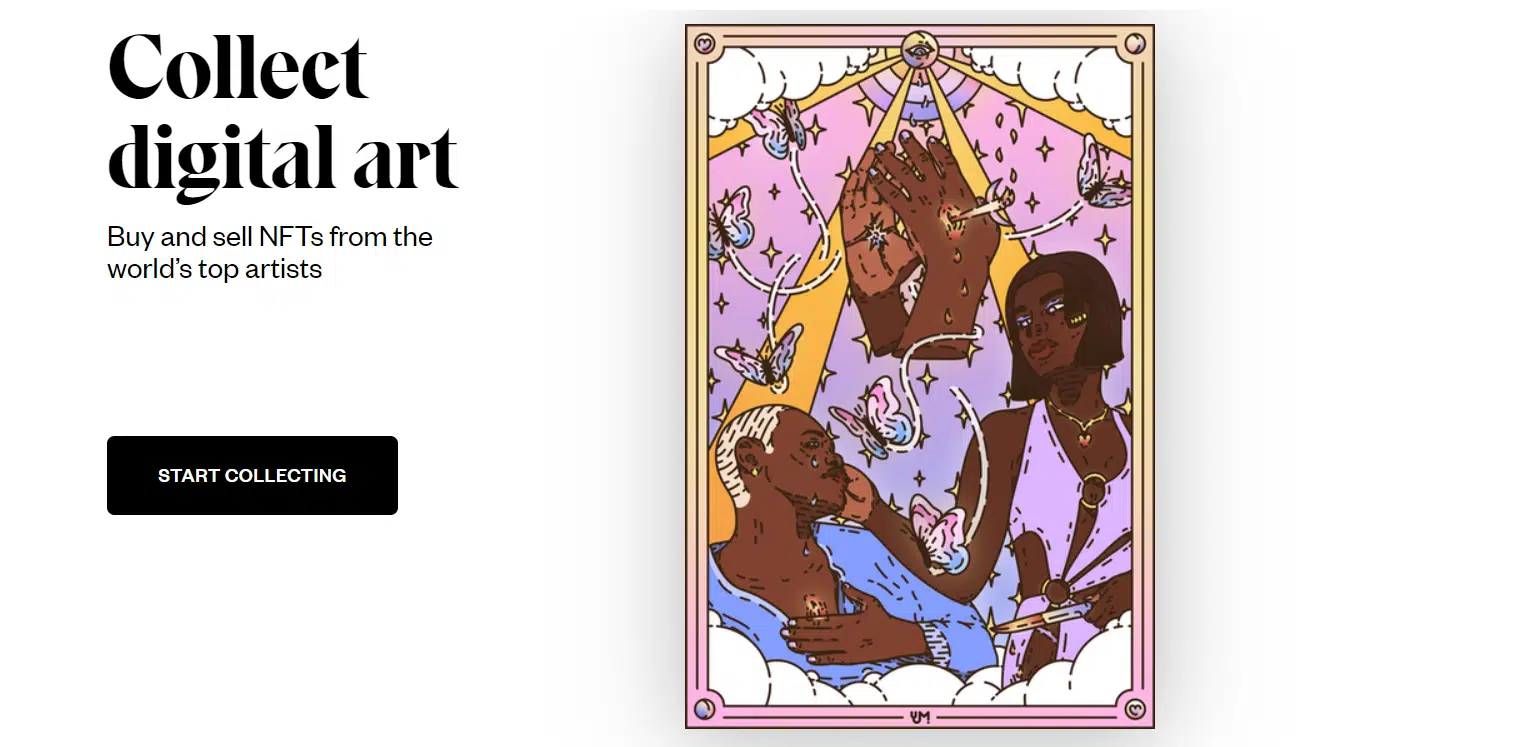
SuperRare is a curated platform. It only works with a small number of hand-picked artists.
- SuperRare’s focus is high-quality single-edition art NFTs.
- Only 1% of the artists’ applications are approved.
- Buyers pay the transaction fee, which equals 3% of the sale price.
- The platform charges 15% commission fees for each sale.
Nifty Gateway
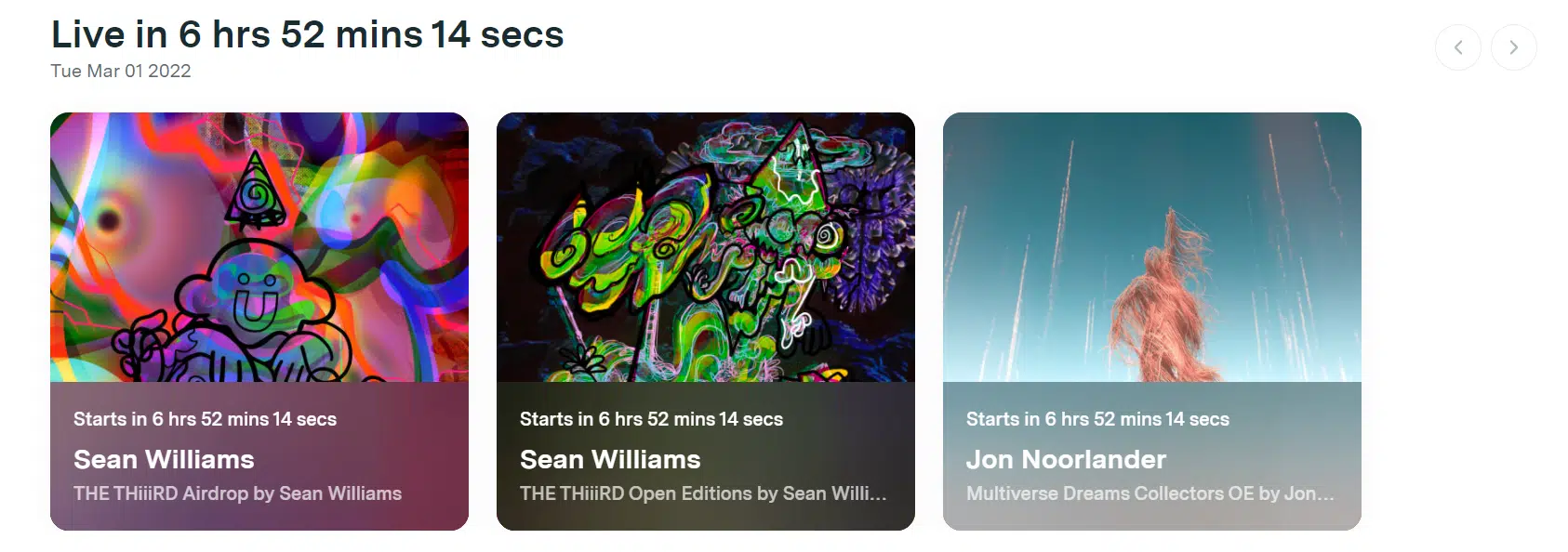
Another exclusive NFT art marketplace is Nifty Gateway. It also hosts Ethereum-based NFTs. It’s challenging to get accepted to Nifty Gateway curated collections.
- They work with very famous artists like Beeple, Grimes, and Steve Aoki. They also host NFT collaborations with celebrities like the one with the artist Blake Kathryn and Paris Hilton. So, it’s very difficult to get accepted for the curated drops unless you’re really famous.
- However, there’re also verified drops on Nifty Gateway. They also require an approval process here, but it’s less strict.
- Nifty Gateway charges 5% commission fees per sale.
- Artists can set their own royalties for secondary sales.
Makersplace

Like Foundation, to list your NFT on Makersplace, you need an invitation from a member of the Makersplace community.
- Easy-to-use platform.
- It charges a 15% commission fee every time you make a sale.
- Sellers receive a 10% royalty fee from all secondary sales.
- Buyers don’t have to use Ethereum; they can also pay with a credit card.
KnownOrigin

Just like SuperRare, KnownOrigin focuses on rare and high-quality art NFTs. It’s one of the oldest NFT platforms.
- Like most of the other marketplaces, 85% of the sale is given to the NFT creator; the platform charges 15% commission fees.
- Artists earn 12.5% royalty from all secondary sales.
Most of the popular NFTs are created and sold on the Ethereum blockchain. That’s why in this article, we concentrated on the marketplaces that host Ethereum-based NFTs.
There are many other marketplaces that allow creators to sell their NFTs based on different blockchains. Some notable ones are the Binance NFT marketplace for NFTs created on the Binance Smart Chain, AtomicHub for Wax-based NFTs, and Solanart for NFTs built on the Solana blockchain.
New NFT Community for Artists, Designers & Creators
The Forest is the first NFT community for designers & creatives. The Forest is more than a community however. It is an educational platform and NFT marketplace that empowers creatives with the knowledge, connections & tools to thrive as NFT & Web3 professionals.
Reason to join: This NFT community is for artists, illustrators, and designers looking to become thriving Web3 & NFT creators and is tailored towards beginners.
Follow The Forest and JustCreativeEth on Twitter.
Frequently Asked Questions
Why does NFT art have value?
NFT art has value because they verify the authenticity of each art piece. Some people can make copies from the original one. But, using authentication check methods, they can easily figure out the original one which makes NFT arts valuable.
Can I sell pictures of my art as NFT?
NFT also allows you to sell your physical art pieces by converting them into a digital format. You can take a picture of your art and sell them in NFT marketplaces.
Is there any NFT Copyrights law?
Copyright law treats NFT artworks the same as other artworks. Once a user creates a new work, they automatically acquire the copyright of that product.
So, it is clear that selling your NFT art does not transfer the NFT copyrights to the buyer. So buyers are not supposed to resell or reproduce the products in their name.
Can you get sued for selling NFT art?
When you just make a copy of the NFT art you see, it is not actually illegal. As it is easier for people to access NFT marketplaces, anyone can screenshot it for reference. But, when you try selling the NFT art pieces of other creators, it is considered illegal and you will get sued.
What is the best NFT marketplace for artworks?
Opensea is considered the best NFT marketplace for all types of NFTs and crypto-collectibles and the same goes for art as well. OpenSea allows you to browse, create, sell, auction, and buy NFT arts.
Related NFT Posts
- How To Buy NFTs
- How to Make and Sell an NFT
- Ultimate NFT Marketing Guide
- Where Do you Store NFTs?
- Frequently Asked Questions about NFTs
- Types of NFTs
Best NFT Marketplaces for Artists
NFTs, or Non-Fungible Tokens are cryptocurrency tokens that are mainly linked to the digital forms that are available online. These days, there are a lot of NFT marketplaces where you can make and sell an NFT.
We invite you to share your insights with us – Do our choices resonate with you? Feel free to share your thoughts in the comments section below.


